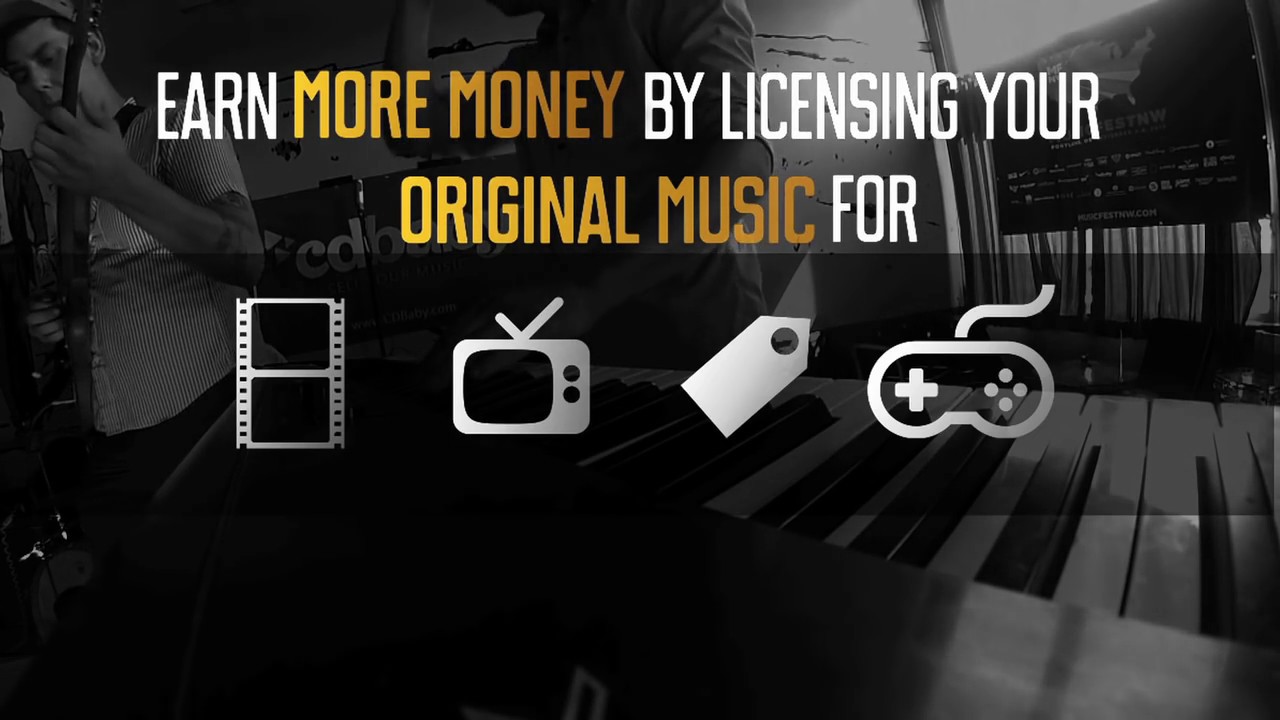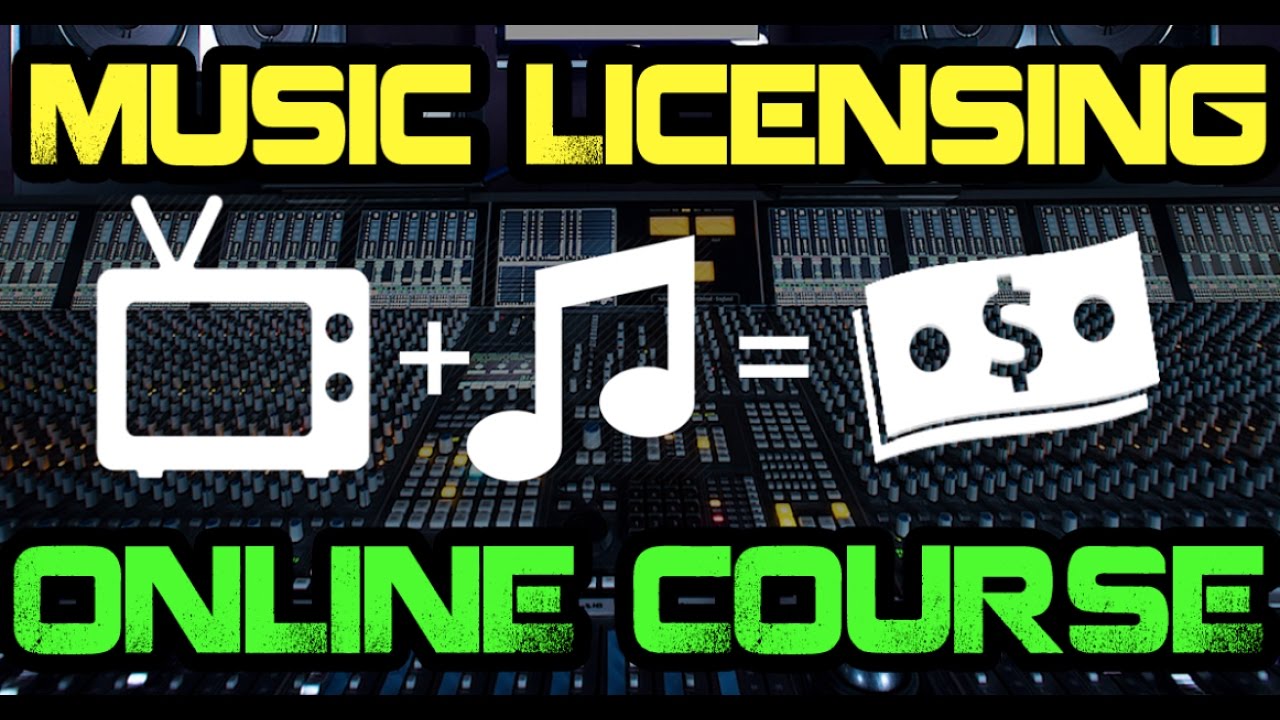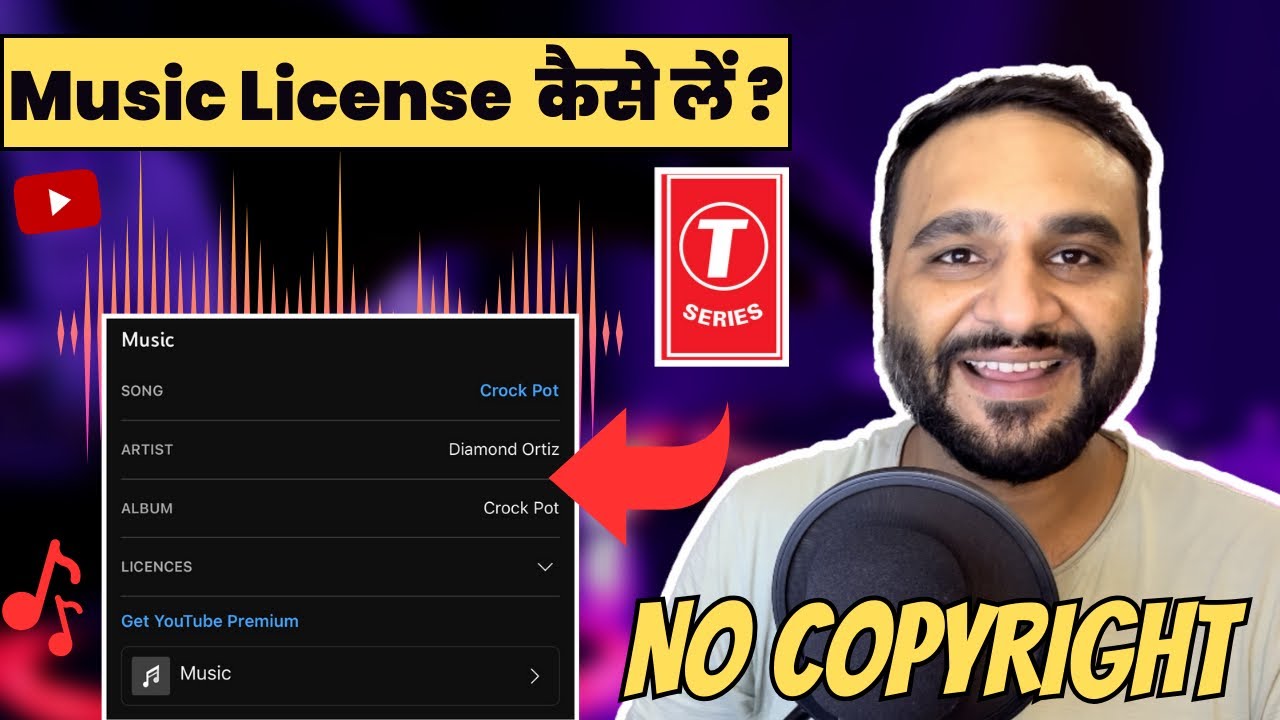Welcome to the world of music licensing! If you're a content creator on YouTube, understanding how to obtain music licenses is crucial for ensuring that your videos don’t get taken down or demonetized. Music licensing can seem daunting at first, but once you get the hang of it, you’ll be able to share your creativity without the fear of copyright infringement. In this guide, we'll break down the essentials of music licensing and copyright compliance for YouTube.
Understanding Copyright in Music

Copyright is a legal concept that gives creators exclusive rights to their work. This means that when you create a song, no one can use it without your permission. In the realm of YouTube, understanding copyright is essential because using copyrighted music without a license can lead to serious consequences, including video removal, channel strikes, or even legal action.
Here’s a basic rundown of how copyright works in music:
- Original Works: When a musician writes a song, they automatically hold copyright over that piece. This includes the melody, lyrics, and any accompanying music.
- Rights Holders: Typically, the rights holder is the artist, their record label, or the music publisher. You need to get permission from the rights holder to use their music.
- Fair Use: Sometimes, you might hear about "fair use.” This concept allows limited use of copyrighted material without permission. However, it’s tricky and best avoided unless you’re ready to back your claim legally.
When it comes to using music in your YouTube videos, you need to think about the following:
- Finding Licensed Music: Consider platforms such as Audiojungle, Artlist, or Epidemic Sound. These can provide you with a vast library of music options, ensuring you’re covered legally.
- Creative Commons Licenses: Some artists release their music under Creative Commons licenses that may allow usage under specific conditions, such as giving credit to the artist or not using the music for commercial purposes.
- Royalty-Free Music: While not all royalty-free music is free to use, you can purchase licenses for tracks that provide you with the rights to use the music without any ongoing fees.
It's also essential to check the specific licensing terms when acquiring music. Some licenses allow for personal use only, while others can be used commercially. Always read the fine print!
Lastly, whenever you use music in your videos, consider adding disclaimers in your video description. This can go a long way in ensuring transparency with your audience and demonstrating your respect for copyright laws.
By understanding copyright in music and the importance of music licensing, you'll be better equipped to create engaging YouTube content that complies with legal regulations. Safe and creative music selection allows you the freedom to focus on your storytelling without the risk of copyright woes!
Also Read This: YouTube TV and the Outdoor Channel How to Watch Outdoor Content
3. Types of Music Licenses You Need for YouTube

Navigating the world of music licenses can feel overwhelming, especially if you're just starting out on YouTube. Understanding the different types of music licenses is crucial to ensure you don’t run into copyright issues. Let's break this down into the main types of licenses you might need.
1. Sync License: This license is a must-have if you want to use music with a visual component, such as videos or films. Basically, a sync license grants you permission to synchronize a specific piece of music with your video content. It’s great for background music, themes, or any other accompaniment to your visuals.
2. Master License: If you’re using an existing recording of a song, you’ll need the master license. This gives you the rights to utilize that particular recording. Essentially, it’s about the sound recording—the actual performance you hear. Without the master license, you might be able to use the song’s composition, but not that specific version you love.
3. Performance License: This license is necessary if you plan to perform the music in any way, but for YouTube, it kind of overlaps with the others. It’s primarily relevant for live performances. However, platforms like YouTube usually cover performance rights for content uploaded there, making it a bit simpler for creators.
4. Creative Commons License: Some artists publish their music under Creative Commons licenses, which can allow you to use their tracks for free, depending on the specific type of CC license. It’s essential to read the fine print—some require attribution, while others might not allow commercial use at all.
5. Royalty-Free License: This is often a popular choice for YouTube content creators. Royalty-free music can be used without recurring fees each time you play the song. However, you still need to follow the license’s terms, which could include buying a license up front. It’s a one-time fee, and you’re good to go!
Navigating these licenses might seem daunting, but breaking it down to these categories can make it clearer. Always remember, acquiring the right music licenses is not just about compliance; it’s about respecting the artists and their work. So, invest the time to understand these types and protect your budding YouTube channel from potential copyright headaches!
Also Read This: How to Listen to YouTube with Screen Off on Your Mobile Device
4. How to Find Royalty-Free Music

So, you’re ready to add some tunes to your YouTube videos, but you want to ensure it’s all above board. Finding royalty-free music doesn’t have to be a chore. There are several excellent resources out there that cater specifically to video creators. Let’s explore some of the best places to find that perfect track!
1. YouTube Audio Library: This should be your first stop! The YouTube Audio Library offers a wide range of royalty-free music and sound effects, all free to use in your videos. You can filter by genre, mood, instrument, and duration, making it easy to find exactly what you need. Plus, some tracks allow you to use them without attribution!
2. Free Music Archive: This platform hosts a vast collection of royalty-free music across various genres. You can browse or search for music based on genres or categories. Make sure to check the licensing for each track as there might be specific attribution requirements.
3. Incompetech: Created by composer Kevin MacLeod, Incompetech offers a slew of royalty-free music. It’s easy to navigate by genre or feel, and you’re only required to give credit to the artist in your video description. It’s an excellent resource for unique, engaging track options!
4. Epidemic Sound: If you’re willing to invest a bit, Epidemic Sound is a fantastic option. They offer a subscription model that gives you access to a massive library of tracks, which could enhance the quality of your videos significantly. Plus, the licensing agreement covers you for any platform, including YouTube.
5. Artlist: Another paid option, Artlist, offers high-quality music with a straightforward licensing model. The music here is often curated for filmmakers, making it perfect for YouTube. Once you purchase the license, you can use the music across multiple projects without additional fees.
In summary, finding royalty-free music is easier than ever—with so many resources at your disposal, you can easily find tracks that fit your style and vibe. Remember to always check the license terms to ensure you're compliant and to give credit where required. Music can elevate your content, so take the time to find the right tunes that resonate with your audience!
Also Read This: What is the Most Viewed Live Stream on YouTube Top Records Explained
5. Purchasing Music Licenses
Alright, you’ve done your homework on music copyright, and now it’s time to dive into the nuts and bolts of actually obtaining those music licenses. Here’s the deal: purchasing a music license can seem a bit overwhelming at first, but with the right approach, it can be a straightforward process.
First, you need to determine the type of music you want to use. Are you looking for a popular track from a famous artist, or are you leaning toward more independent creators? Here’s how you can go about purchasing your music licenses:
- Identify the Source: Knowing where the music is coming from is crucial. Check the musician's website, music publishers, or even licensing agencies. These are typically the gatekeepers of the music you want to use.
- Choose the Right License: There are different types of music licenses you may need based on your project:
- Synchronization License: Required for pairing music with visual media.
- Master Use License: Allows you to use the specific recording of the song.
- Contact the Rights Holder: Once you’ve identified the rights holder, reach out to them. This could be the artist, a music publisher, or a licensing agency. Be clear about how you plan to use the music.
- Negotiate Terms: Don’t hesitate to negotiate terms that work for both of you, especially if your project is on a tight budget. It’s not uncommon for independent artists to offer lower rates or even waive fees for promotional projects.
- Get Everything in Writing: Once you've agreed on terms, ensure you get a written contract that outlines the license’s scope and duration. This protects both you and the artist.
Feeling a bit intimidated? That’s totally normal! Many platforms exist where you can purchase pre-cleared tracks at a fraction of the cost of dealing directly with record labels. Services like AudioJungle, Pond5, and PremiumBeat offer a vast library of music for various projects while simplifying the licensing process.
In the end, taking the time to properly license your music can save you from potential copyright disputes down the line. Plus, supporting artists and creators is always a good thing!
Also Read This: Does YouTube TV Include ACC Network Extra for Sports Fans
6. Using YouTube's Audio Library for Licensed Music
If the prospect of navigating the music licensing world feels a bit too daunting for you, there’s a golden option sitting right within YouTube itself: the YouTube Audio Library. It’s a treasure trove of free music and sound effects that you can use in your videos, ensuring that you stay compliant with copyright laws.
Here’s why the YouTube Audio Library is worth your consideration:
- Free of Charge: Yes, you read that right! All the music available in the Audio Library can be used for free in your YouTube videos.
- Simplified Licensing: Each track is labeled with its usage rights, making it easy to know if attribution is required or if it’s free to use without any strings attached.
- Diverse Selection: With various genres, moods, and lengths available, you can find just the right sound for your project, whether you’re aiming for upbeat, cinematic, or something in between.
To access the YouTube Audio Library, simply go to your YouTube Creator Studio, select "Audio Library" from the menu, and start browsing. You can filter tracks by genre, mood, and even the length to find exactly what you need. And if you want to make it even easier, you can save your favorite tracks to access later.
While using music from the YouTube Audio Library is a hassle-free way to enhance your videos, remember that the quality of your content is ultimately determined by how well the music aligns with your visuals and narrative. So, take some time to test out different tracks and see how they complement your video.
In conclusion, whether you decide to navigate the world of music license purchasing or stick with the robust array of options available in the YouTube Audio Library, you’re well on your way to creating fantastic content compliant with copyright laws. Happy creating!
Also Read This: How to Link YouTube to PS5: Streaming YouTube on Your Console
7. Steps to Obtain Music Licenses
Obtaining music licenses for your YouTube videos can seem like a daunting task, but when broken down into manageable steps, it becomes much clearer. Here’s a simple guide to help you navigate the process:
- Identify Your Needs: Evaluate the type of music you want to use. Is it background music, an intro theme, or a featured song? The purpose will often determine the type of license required.
- Research Music Options: There are various sources for music, including:
- Royalty-Free Music Libraries (e.g., Epidemic Sound, Artlist)
- Direct Artist Licensing (reaching out to independent artists)
- Public Domain Music (works where copyright has expired)
- Synchronization License: Allows you to use music in conjunction with visual media.
- Master Use License: Allows you to use a specific recording of the song.
- Performance License: Required if you plan to play music in a public venue.
By following these steps, you’ll not only comply with copyright laws but also support the artists who create the music you love!
Also Read This: How to Share YouTube Videos on Instagram: Post, Stories, and More
8. Common Mistakes to Avoid When Licensing Music
Licensing music is a sensitive area, and even the most well-intentioned creators can make missteps. Here are some common mistakes to steer clear of:
- Assuming All Music is Free: Many creators believe that they can use any track they find online without consequences. This is rarely the case. Always verify the licensing status and terms before using any music.
- Neglecting to Read Licenses: It’s tempting to skip the fine print, but not reading the terms of your music license can lead to unexpected restrictions or costs down the line. Every detail matters!
- Using Unlicensed Music: This might seem like a shortcut, but it can lead to your videos being muted, removed, or even facing legal action. Always ensure the music is properly licensed.
- Ignoring Attribution Requirements: Many licenses, especially for royalty-free music, require you to credit the artist. Failing to do so could result in a breach of the license.
- Overlooking Different Types of Licenses: Be aware that different licenses serve different purposes. Ensure you obtain the correct type for your needs, such as sync or master use licenses, to avoid legal trouble.
- Not Getting Everything in Writing: Verbal agreements can lead to confusion. Always have your licensing agreements in writing, detailing what rights you’ve been granted.
- Failing to Keep Records: When using licensed music, keep detailed records of all agreements. This documentation can be crucial in case of disputes in the future.
By avoiding these common pitfalls, you can license music correctly and focus on creating amazing content for your audience. Happy licensing!
Conclusion: Stay Compliant and Protect Your Channel
As a content creator on YouTube, ensuring that you adhere to copyright laws is crucial for the longevity and success of your channel. With the immense variety of music available, it’s easy to get lost in the search for the perfect soundtrack for your videos. However, navigating music licenses can be daunting. Here are key points to remember:
- Understand Your Options: Familiarize yourself with different types of music licenses, including royalty-free, Creative Commons, and traditional licensing.
- Read License Agreements: Always read the terms and conditions before using music. Some licenses have specific restrictions regarding commercial use or modifications.
- Maintain a Library: Build your own collection of licensed music or reputable sources to simplify future projects.
- Consult Legal Expertise: If in doubt, consider consulting a copyright attorney to avoid potential pitfalls.
By prioritizing copyright compliance, you're not only protecting your channel from potential strikes or takedowns but also fostering a respectful and lawful creative community. Always remember that content creation thrives on originality and respect for other artists' work. In summary, invest time in understanding music licensing, stay informed, and your YouTube channel will flourish while remaining compliant with copyright laws.
 admin
admin








